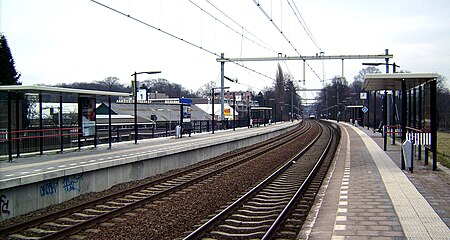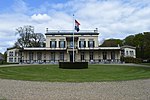Arnhem Presikhaaf railway station
1969 establishments in the NetherlandsRailway stations in ArnhemRailway stations in the Netherlands opened in the 1960sRailway stations on the IJssellijnRailway stations on the Staatslijn A ... and 1 more
Railway stations opened in 1969

Arnhem Presikhaaf is a railway station located in the neighborhood Presikhaaf of Arnhem, Netherlands. The station was opened on 28 September 1969 and is located on the Arnhem–Leeuwarden railway. The train services at this station are operated by Nederlandse Spoorwegen. The station is the easternmost station in Arnhem. A previous station called Plattenburg was very closely located to the location of the current station (from 1882 to 1905).
Excerpt from the Wikipedia article Arnhem Presikhaaf railway station (License: CC BY-SA 3.0, Authors, Images).Arnhem Presikhaaf railway station
Eleonorastraat, Arnhem
Geographical coordinates (GPS) Address Nearby Places Show on map
Geographical coordinates (GPS)
| Latitude | Longitude |
|---|---|
| N 51.9875 ° | E 5.9430555555556 ° |
Address
Eleonorastraat
6824 EX Arnhem
Gelderland, Netherlands
Open on Google Maps









